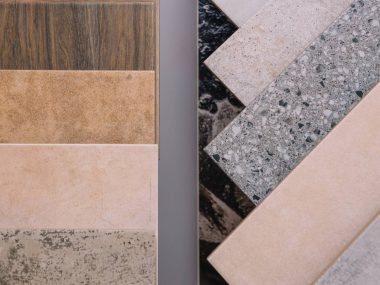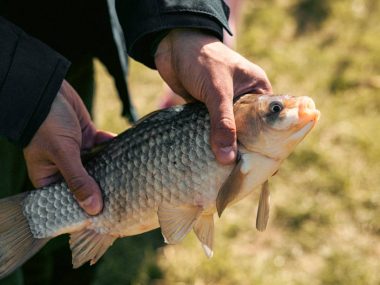As summer approaches, many of us have to face the return of insects, including wasps. Dealing with wasp nests can be tricky, but we’re here to help you with some advice. Before taking any action, read this guide to avoid unnecessary risks and expenses.
But first, let’s get to know them a little bit more…
Also read: 10 Simple Ways to Boost Your Productivity
Typical Wasps in Australian Houses
In Australia, several types of wasps can be found nesting in and around human houses. These are some of the common ones to be aware of:
- European Wasps (Vespula germanica):
- Nesting Locations: European wasps often choose concealed locations, including wall cavities, roof spaces, and underground. They build large, spherical nests with distinctive hexagonal cells.
- Behaviour: These wasps are known for their aggressive nature, particularly when their nest is disturbed. They can sting repeatedly, and their stings are painful.
- Identification: European wasps have a yellow and black striped pattern on their bodies, similar to other wasp species.
-

Paper wasp Paper Wasps (Polistes spp.):
- Nesting Locations: Paper wasps create open, umbrella-shaped nests under eaves, pergolas, and in trees and shrubs. Their nests consist of a single comb with hexagonal cells.
- Behaviour: While paper wasps are generally less aggressive than some other species, they will sting if they feel threatened or their nest is disturbed.
- Identification: Paper wasps are typically slender with a reddish-brown to dark brown colouration, often with yellow or orange markings on their bodies.
- Mud Daubers (Sphecidae family):
- Nesting Locations: Mud daubers are solitary wasps that construct small, cylindrical mud nests on walls, ceilings, or sheltered areas. Each mud nest houses a single wasp larva.
- Behaviour: Mud daubers are generally not aggressive and rarely sting humans unless directly provoked.
- Identification: These wasps have elongated bodies with a narrow waist and are typically black or brown.
- Yellowjackets (Vespula spp.):
- Nesting Locations: Yellowjackets are known to nest in wall cavities, roof spaces, and even in the ground. Their nests can be both aerial and subterranean.
- Behaviour: Yellowjackets are highly territorial and can be aggressive when their nest is disturbed. They are known to sting multiple times and their stings can be painful.
- Identification: Yellowjackets are typically black with yellow markings on their bodies, resembling common wasp patterns.
Understanding the nesting habits, and behaviour, and identifying features of these common wasp species can help homeowners take appropriate precautions when dealing with or preventing wasp infestations in Australia. Safety should always be a top priority, especially when addressing aggressive species like European wasps and yellowjackets.

How To Deal With Wasp Nest
Call the Professionals
We strongly recommend hiring professional pest controllers to handle wasp nests. They have the expertise to safely and swiftly remove the nest from your home or surroundings. If you can afford it, this is your best option.
Do It Yourself (DIY)
For those determined to tackle the problem on their own or unable to afford professional help, here are some tips to consider.
Dealing with a Wasp Nest Using Water
If you’re considering handling a wasp nest on your own, using water is one option. But, as with any do-it-yourself project, safety is crucial to avoid harm. Make sure you have the necessary safety equipment in place. It’s also a good idea to check if you are allergic to wasp stings through an allergy test from a doctor before attempting any removal.
Depending on the nest’s location, you can try drowning a free-hanging nest by placing a cloth bag over it, securing it tightly with string, and then submerging the bag in a bucket of water. Leave the bag in the water for at least 12 hours, and the wasps should drown. Keep in mind that this method requires close contact with the wasps, so prioritise safety throughout the process.
Pesticides
To tackle a wasp nest, consider buying specialised wasp pesticides from your local DIY store. Using pesticides designed for smaller insects like ants may not be effective, so make sure you have the right tools for the job.
While wearing suitable protective clothing, approach the nest as closely as you safely can and spray the bottom of the nest with the pesticide. Afterwards, quickly move away from the nest and allow the pesticide to work for at least 12 hours. If you still see live wasps in or around the nest after this time, repeat the process. Once all the wasps are gone, you can safely remove and dispose of the nest after drenching it in more pesticide.
Dishwashing Soap
If you prefer a non-toxic approach, you can use dish soap to eliminate wasps. Dishwashing soap coats the wings of wasps, making them unable to fly and eventually causing them to drown. Create a soapy water solution and direct a stream into the nest’s opening for about 20 seconds.
You may need to repeat this several times to ensure all the wasps are gone. The number of repetitions will depend on the nest’s size and the number of wasps inside, so be prepared for some variation in each case.

Prevent Future Wasp Nests
After successfully removing a wasp nest from your home, it’s essential to take steps to keep them from coming back. Here’s how:
- Seal Entry Points: Make sure to fill any holes or gaps in your home, preventing new wasps from getting inside. Pay close attention to unsealed vents and cracks around doors and windows.
- Secure Your Trash: Keep your rubbish bins sealed and all garbage securely tied up. The scent of food can attract wasps, so proper waste management is crucial in preventing their return.
Final Thoughts
When it comes to dealing with wasp nests around your home, safety should always be your top priority. If you discover a wasp nest, seeking professional help is the best and safest option. Professionals have the expertise and equipment to handle the situation efficiently and securely.
If you choose to take matters into your own hands, make sure to do so with full precaution, especially when dealing with aggressive species like European wasps or yellowjackets. Wear appropriate protective gear, use the recommended methods carefully, and keep a safe distance from the nest.
In case of a wasp sting, seek medical assistance immediately, as some people may be allergic to wasp stings (which you might never know until you get stung and it might be too late), which can lead to severe reactions like anaphylaxis. Your safety and well-being should always come first when addressing wasp nests in and around your home.






